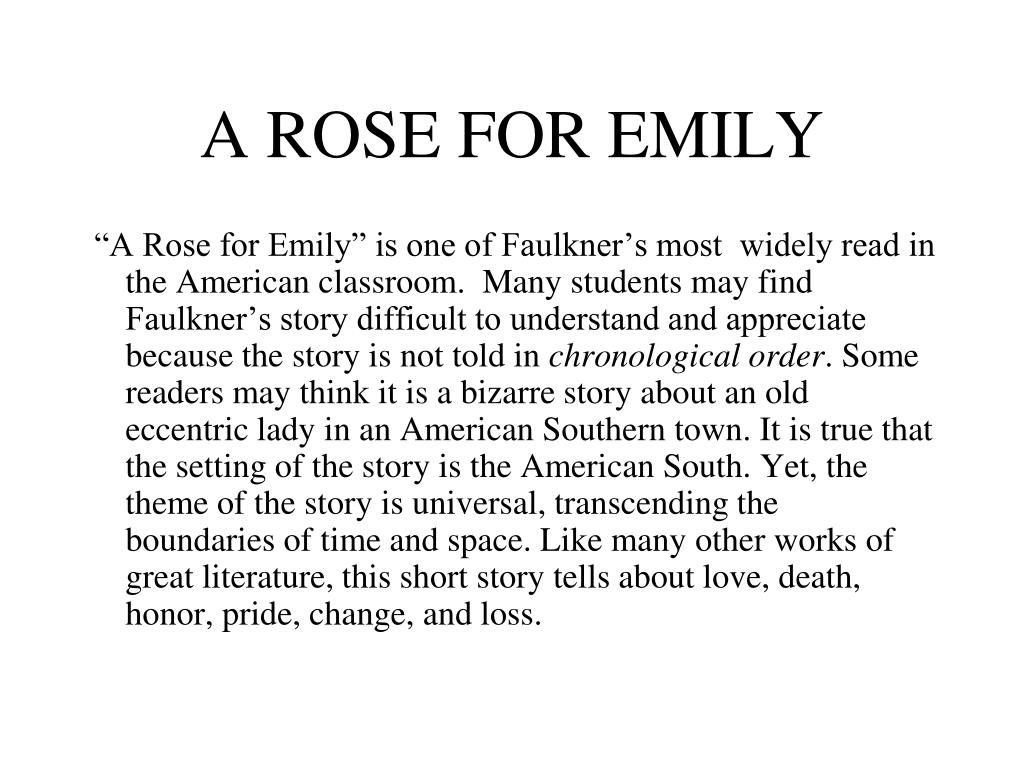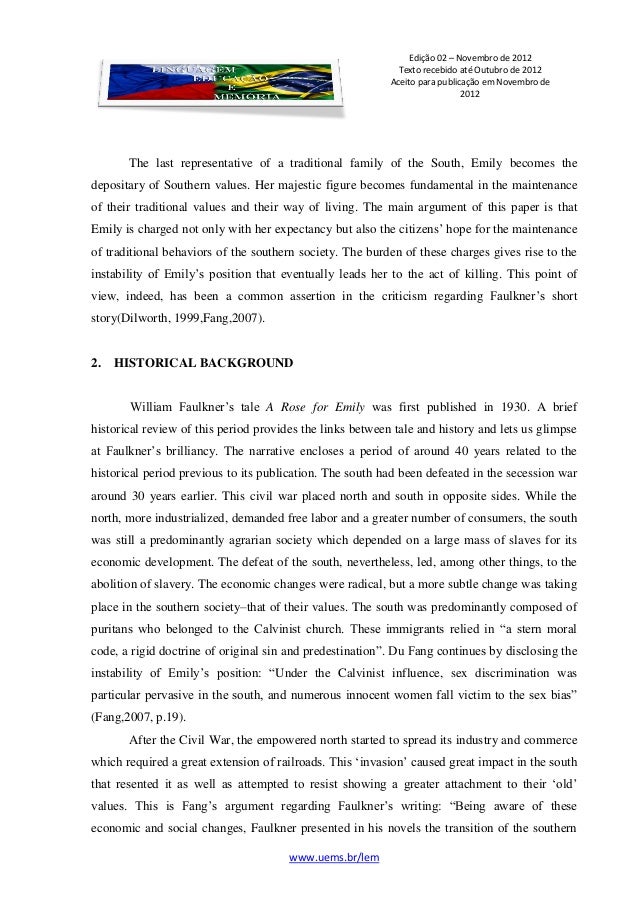

I have no taxes in Jefferson.’” (Faulkner, 80).

As the story continues in this same scene, the men tell Emily that she must pay the taxes to the city, to what she answers “’See Colonel Sartoris. This description, once again, indicates that this house has been not accessed for many years.
#A ROSE FOR EMILY NARRATOR POINT OF VIEW CRACKED#
The furniture in the inside of the house is described with “leather was cracked and when they sat down, a faint dust rose sluggishly about their thighs, spinning with slow motes in the single sun-ray” (Faulkner, 79).

The narrator later becomes somewhat omniscient as she is able to tell the story inside the Greirson household when the tax collectors come to collect some taxes that her father never paid. The description “It was a big, squarish frame house that had once been white, decorated with cupolas and spires and scrolled balconies in the heavily lightsome style of the seventies, set on what had once been our most select street” (Faulkner, 79) lets the reader know that the Greirson family is of wealth, though Emily died alone in this big house. She then goes on to describe the house in the once upscale neighborhood but now full of cotton gins and such. The narrator explains that no one, with the exception of Emily’s servant, has gone in the house for over a decade since her father died. Part one of “A Rose for Emily” tells about Emily’s funeral. The story is told from the point of view of one of the neighbors, possibly a female with a gossipy tone and feel. In “A Rose for Emily” William Faulkner portrays Emily Greison’s life by breaking the story down into a series of events starting from when the woman dies and what happens at her funeral back to explain her life before then. How can a rich, poised woman be guilty of killing her future husband? Maybe she was not so poised after all, maybe it was an accident, or maybe she was mentally unstable.


 0 kommentar(er)
0 kommentar(er)
